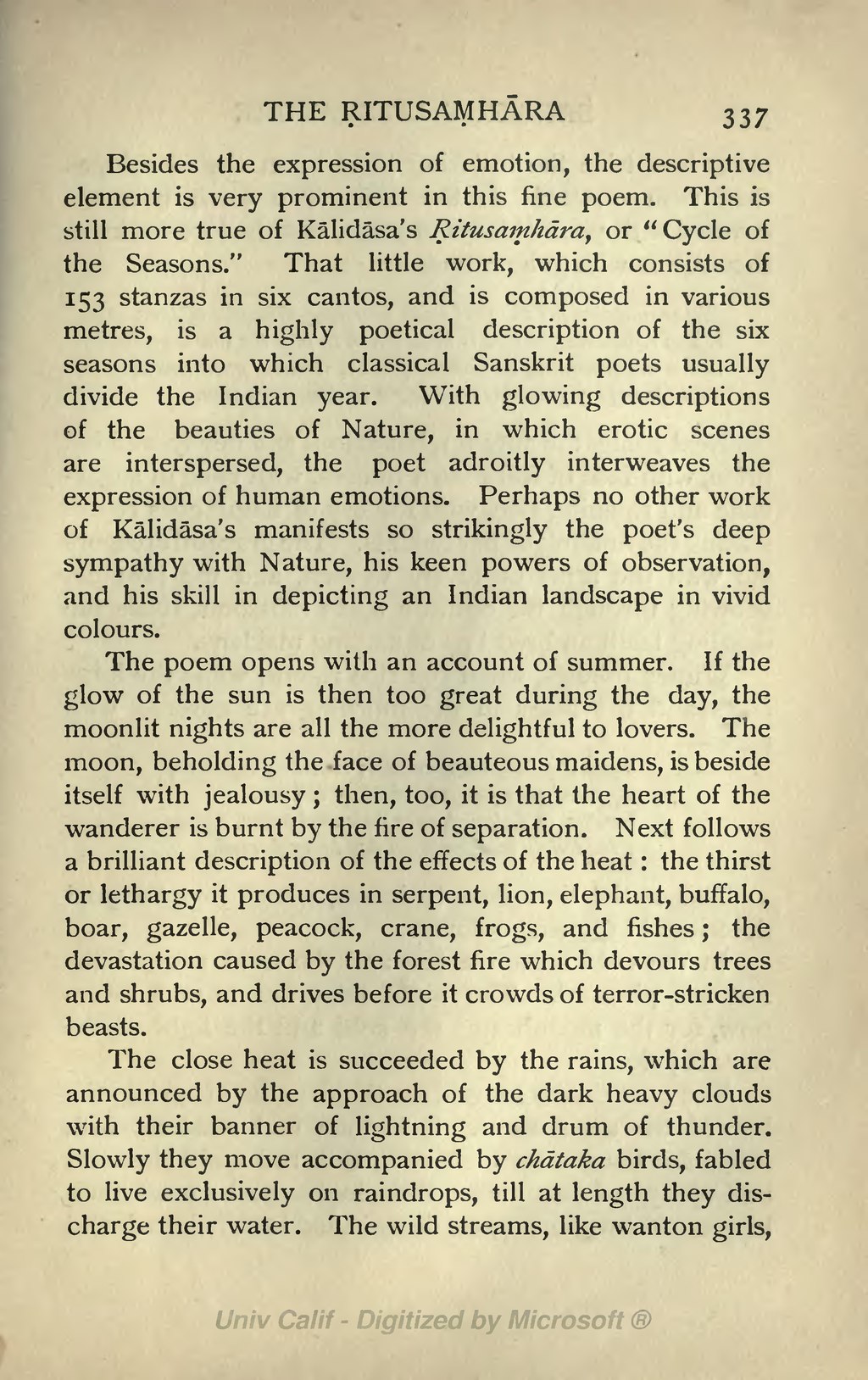Besides the expression of emotion, the descriptive element is very prominent in this fine poem. This is still more true of Kālidāsa's Ṛitusaṃhāra, or "Cycle of the Seasons." That little work, which consists of 153 stanzas in six cantos, and is composed in various metres, is a highly poetical description of the six seasons into which classical Sanskrit poets usually divide the Indian year. With glowing descriptions of the beauties of Nature, in which erotic scenes are interspersed, the poet adroitly interweaves the expression of human emotions. Perhaps no other work of Kālidāsa's manifests so strikingly the poet's deep sympathy with Nature, his keen powers of observation, and his skill in depicting an Indian landscape in vivid colours.
The poem opens with an account of summer. If the glow of the sun is then too great during the day, the moonlit nights are all the more delightful to lovers. The moon, beholding the face of beauteous maidens, is beside itself with jealousy; then, too, it is that the heart of the wanderer is burnt by the fire of separation. Next follows a brilliant description of the effects of the heat: the thirst or lethargy it produces in serpent, lion, elephant, buffalo, boar, gazelle, peacock, crane, frogs, and fishes; the devastation caused by the forest fire which devours trees and shrubs, and drives before it crowds of terror-stricken beasts.
The close heat is succeeded by the rains, which are announced by the approach of the dark heavy clouds with their banner of lightning and drum of thunder. Slowly they move accompanied by chātaka birds, fabled to live exclusively on raindrops, till at length they discharge their water. The wild streams, like wanton girls,
